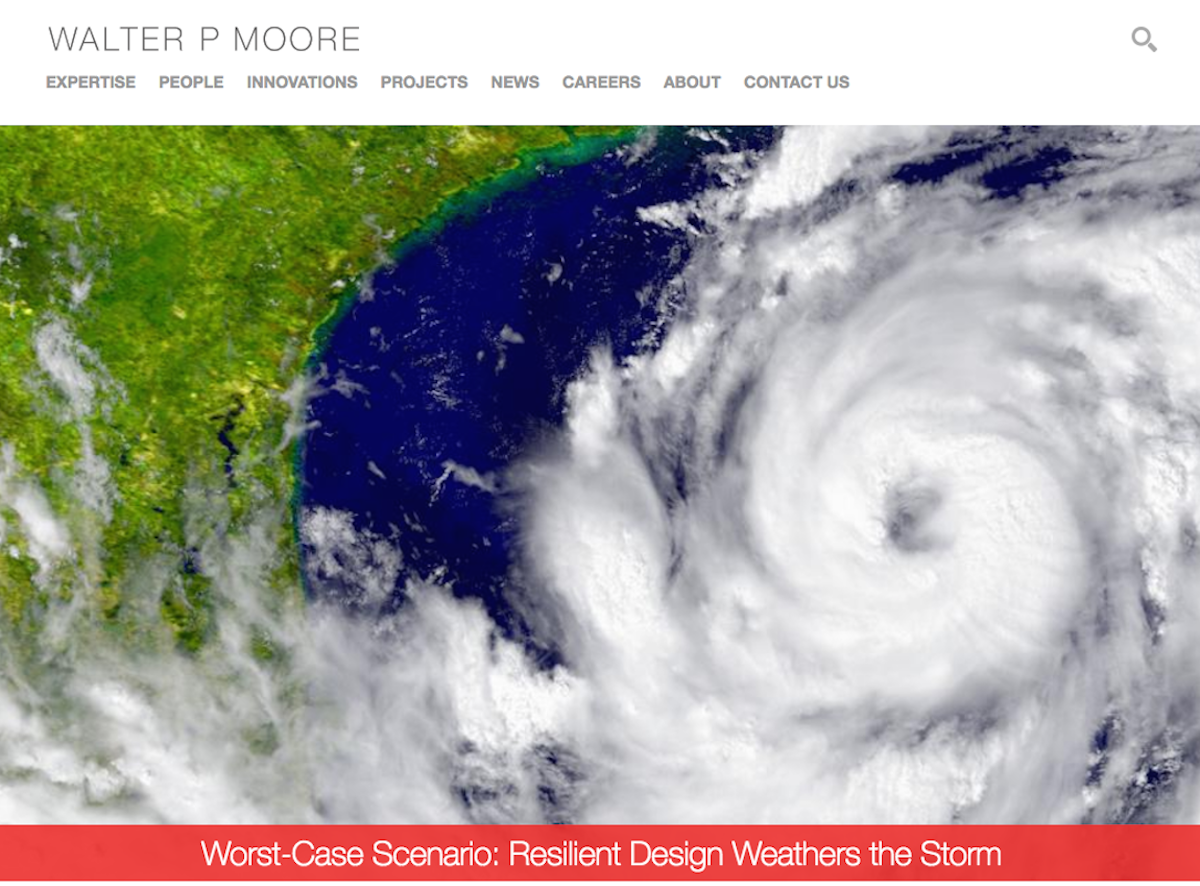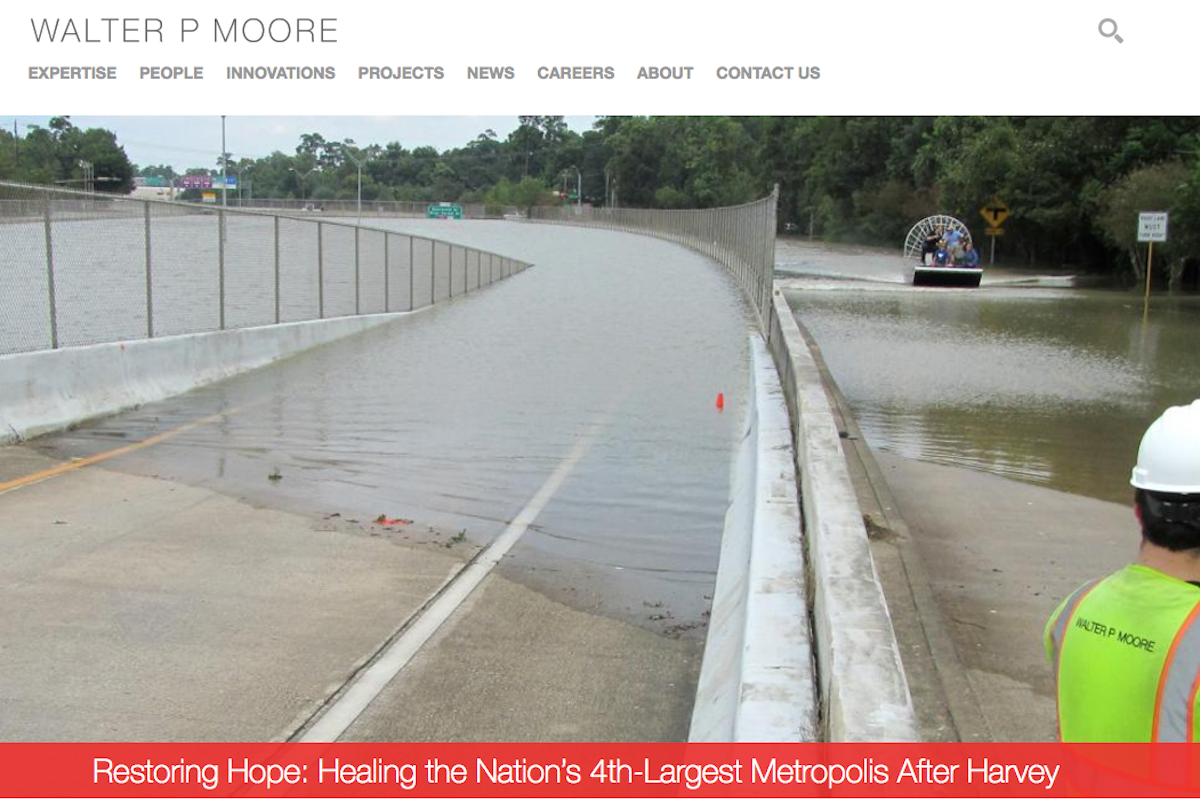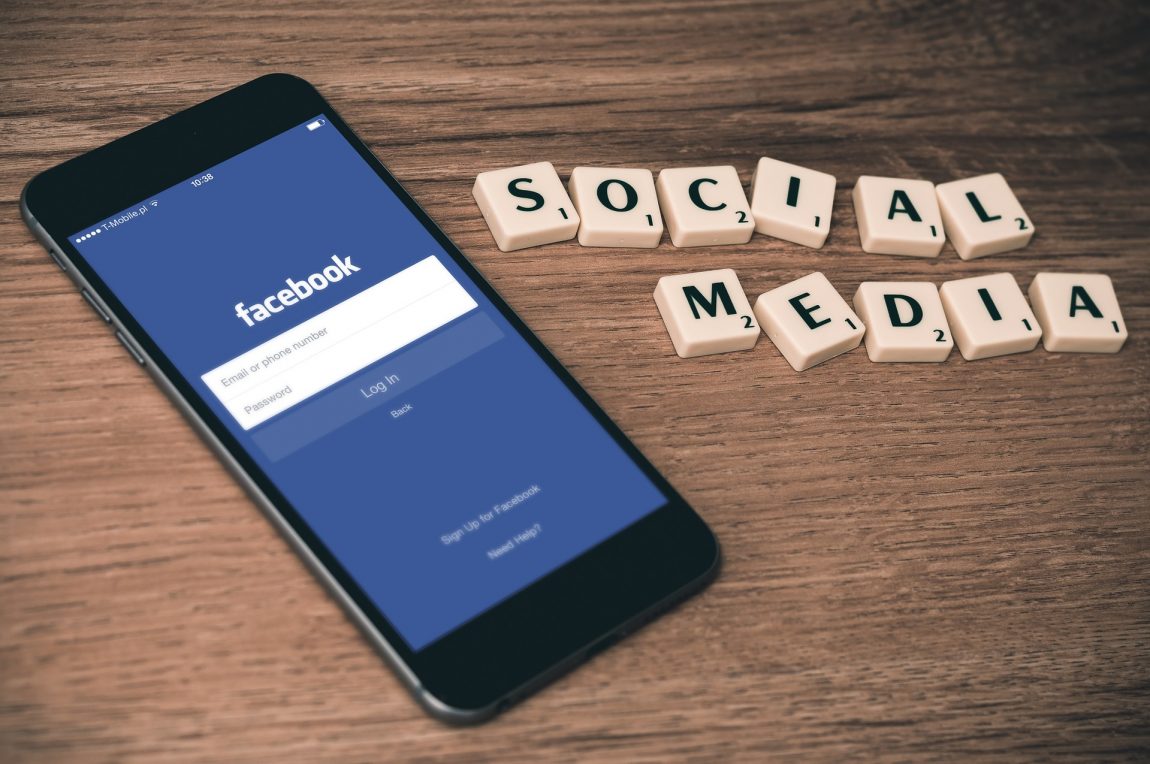by MGB2B

While they have changed it as of late, the image above was the lead message on the Walter P Moore website a few days after Hurricane Harvey made landfall. Walter P Moore is an engineering firm headquartered right in Houston. When you click on the slide, it takes you to a blog post from May about building structures that are resilient in the face of hurricane season. Which was all well and good in May.
On September 1, however, it was a little alarming to see this image without a community outreach message accompanying it. Other Houston companies like ConocoPhillips and Amegy Bank had this type of message of encouragement within a few days after the storm hit.
To be fair, Walter P Moore seems to have (rightly) placed more importance on getting into the trenches and helping out the city right away than they did on their website. It was encouraging to see a new lead slide when I returned to their website.
What We Should Have Seen on the Website Right Away:

Branding after disasters – whether natural or manmade – can be precarious. (Some are downright tasteless.) But there are a few guidelines you can follow. Doing so can ensure your business is regarded as a caring, socially responsible member of the community.
Here’s a Quick Guide to Website Updates after a Natural Disaster:
- Have a Contingency Plan. Most of the time, your website won’t have any content that will offend your target audience. But when a disaster happens, that can change in a second. Make sure someone in your organization is in charge of reviewing dynamic site content regularly. This comes in particularly handy after natural disasters or major world events. This person should know your brand and business well and have direct access to your website so they can make edits. The key is to have an alternate person in charge in case Person A is unable to update your site.
- Make Sure Your Website Can Be Managed by Your Staff. If you’re not already using a CMS (Content Management System), you might want to change that. Using one makes it easy for you to follow Rule #1. In a pinch, you’d be able to have any (trusted) colleague go online and make changes to your site.
- Don’t Use a Disaster-Response Message to Sell. When you do post something on your site responding to a hurricane, a terrorist attack, or any type of disaster, make sure your message cannot be seen in any way as selling your products or services. This may seem like common sense, but a lot of brands ignore the rule. Don’t be one of them.
- Be Sensitive to the Emotional Needs of Your Community. This should go without saying. If you can’t come up with something on your own, find a good writer to carefully craft the message you want to appear on your site. Let the community know that you are with them. This can take the form of a letter from the CEO or a simple visual that links to a blog talking about the disaster aftermath and the need for help. If it’s not your community and you want to help out, you can include a donation button on your website, so that anyone who visits can help out through your site. There are many options available.
Walter P Moore redeemed itself with both its actions and its new lead website story. Your brand can be a step ahead of the game by following the advice above. Instead of responding, just be ready for whatever might come down the pike. These days, it could very well be anything.
In the meantime, let’s send out our heartfelt support to the communities affected by both Harvey and Irma in the past few weeks. They are going to need all the help they can get.
Continue Reading
by MGB2B

The Myth: Testimonials Are the Old Way of Doing Things
The Truth: B2B Buyers Are Highly Influenced by What Their Peers Have to Say
There are many different types of content you can produce to attract new prospects to your brand, but one you won’t want to overlook is testimonials.
Testimonials have been around in many forms since the dawn of marketing. And the reason they’re not going anywhere anytime soon is that B2B buyers value them more than you might think. In fact, more than half of B2B buyers rely on customer testimonials or referrals to make purchase decisions.
The thing you have to remember about testimonials is that they need to be done properly.
Here Are 5 Tips for Creating Effective B2B Testimonials:
- Video Is the Way to Go. While having a quote or two on your website can’t hurt, video testimonials appeal to Gen X and Gen Y buyers who consume visual content more and more each day. According to the Content Marketing Institute, 62% of B2B marketers have found video to be effective.
- Keep It Authentic. It seems like I shouldn’t have to say this, but don’t use actors. Ever. Your buyers want to see testimonials from real human beings who have used your products or services. BS detectors are in abundance in 2017.
- Make It Short and Sweet. Testimonials are very different from How-to videos or entertainment videos. If you go too far over the one-minute mark, you’re going to start losing people. So to be more effective, keep your video around 45-60 seconds, with your superstar clients and customers front and center.
- Host Your Videos Efficiently. Of course you want your testimonial videos to appear on your website. But make sure you host it on a video site like YouTube or Vimeo and embed the videos into your site. This will be less taxing on your server and make it easier to share on social media.
- Distribute Via the Right Channels. Speaking of social media, you’ll want to make sure you feature your videos on Facebook to get in front of your most engaged audience. Instagram is also a good place for testimonial videos. You can show a short clip and drive people to a link to the full video in your bio.
Follow these guidelines, and you’ll be on your way to creating successful testimonial videos. Need help getting started? Drop us a line.
Continue Reading
by MGB2B
 Social media is no longer something only younger generations participate in. Now more than ever, it’s important that your manufacturing company utilizes it to reach a wider audience. In doing so, you’ll get your products and services in front of people who might not have initially seen it. Building a social campaign can be a complicated process, but when done correctly, the payoff is sizable. The most important thing to remember is that campaigns are “living” pieces of your company. They need to be monitored throughout their lifetime to ensure they are running smoothly. And if not? Here are a few things to keep in mind…
Social media is no longer something only younger generations participate in. Now more than ever, it’s important that your manufacturing company utilizes it to reach a wider audience. In doing so, you’ll get your products and services in front of people who might not have initially seen it. Building a social campaign can be a complicated process, but when done correctly, the payoff is sizable. The most important thing to remember is that campaigns are “living” pieces of your company. They need to be monitored throughout their lifetime to ensure they are running smoothly. And if not? Here are a few things to keep in mind…
Organic vs. Paid
You’ve surely heard the terms “organic” and “paid” when it comes to social traffic. Organic traffic is the traffic you get on your social account without having to pay. So, if someone finds your profile, likes a photo, shares a post, or leaves a comment, without any prompting, that’s organic traffic. Paid traffic, on the other hand, happens when you pay to have your posts boosted, ensuring they get in front of your desired audience. The likes, shares, comments, and follows that result directly from these paid campaigns are paid traffic.
So you’ve built your campaign, now what?
To ensure your campaign performs to the best of its ability, there are a few things to focus on:
-
Your Audience
Who you are trying to reach with your message? There are a lot of great metrics tools out there that can help you determine the audience you are already reaching, which you can eventually build off of. Twitter, for example, has an entire section in their user interface that breaks down your audience. From your audience’s interests, to their buying style, wireless carrier, and demographics, you have an incredibly detailed picture. If your campaign not performing as well as you had hoped, analyze this picture. You have time to reconfigure and adjust your audience throughout the lifetime of your campaign, as long as your monitoring it.
-
Your Message
This facet is closely tied to your audience, and varies from each one. Consider speaking to a 28 year old engineer differs versus a 50 year old executive. The interests, abilities, and knowledge of these two people vary greatly. Your message should be tailored to each. Since social media has the ability to speak directly to your audience as individuals (and they’ve come to expect it), make sure you do just that.
-
Your Platform
Social media outlets like Twitter, Facebook, YouTube, Instagram, and LinkedIn all have a purpose, and they’re not necessarily the same. Instagram is strictly for photos or easily-digestible videos. Facebook is a melee of articles, photos, thought-pieces, and more. Hopefully, before you’ve created a campaign, you’ve chosen which platform works best for you, your message, and your audience. It’s easy to default to Facebook but if you notice your campaign taking a hit, take a step back. Review the pros and cons of each social site (and believe me, they all have pros and cons.) If the platform you’ve chosen doesn’t check most or all of your boxes, halt your campaign. Move the budget over to a platform better-suited for your needs. It’ll make a big difference in your ROI.
As with anything, there are more than just three factors that could affect your social media campaign performance – these are just the tip of the iceberg. If you want to get in front of the right people, with the right message, at the right time, you have to do your homework.
Continue Reading



